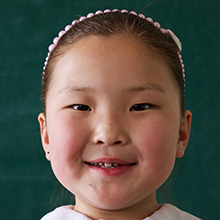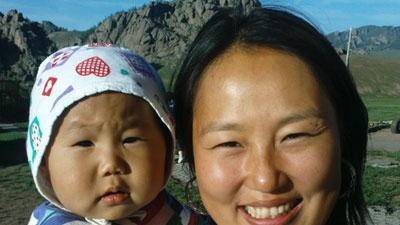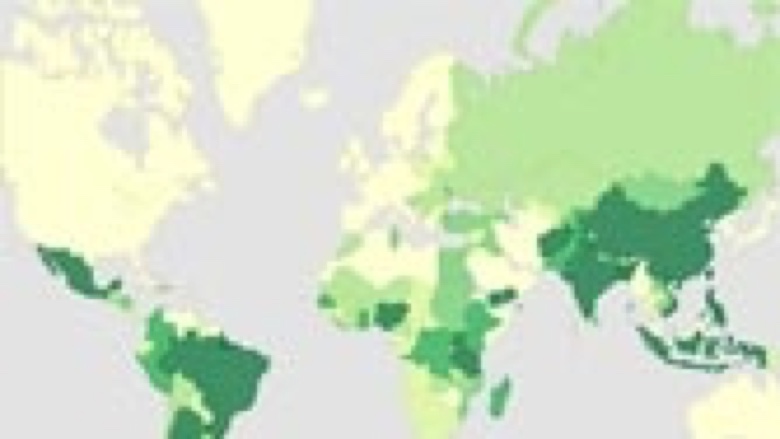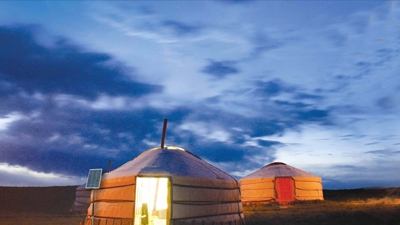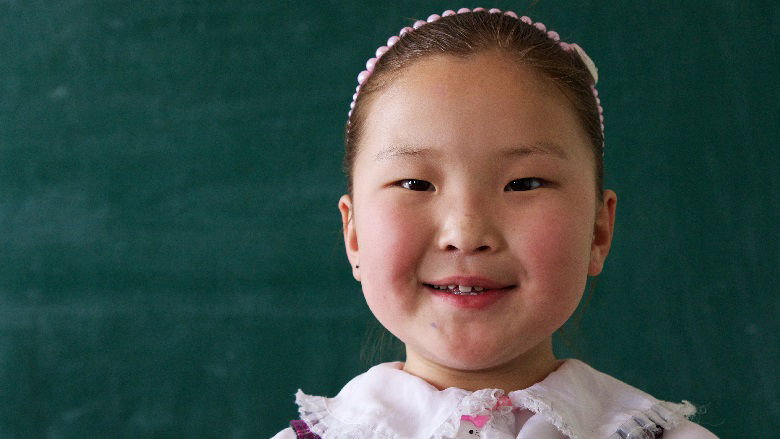Mongolia became a member of the World Bank in February 1991, and the World Bank celebrated the 30th anniversary of Mongolia’s membership in 2021. Since 1991, IDA has supported Mongolia in a range of areas, including transport, rural development, education, health, Ulaanbaatar’s development, sound management of the mining sector, environmental protection, and policy development. Over the last three decades, the World Bank has provided over US$1.4 billion in development financing to the country.
In addition to lending operations and grants, the Bank also provides analytical and advisory services to Mongolia to support its medium and long-term development objectives and to build the capacity for formulating and implementing strategic reforms.
Projects
Active projects:
In the transport sector, the World Bank is supporting the Mongolia Transport Connectivity and Logistics Improvement Project to improve climate-resilient connectivity and logistics efficiency for the meat value chain, and the Ulaanbaatar Sustainable Urban Transport Project to develop a comprehensive framework for sustainable urban mobility, reduce congestion, and improve road safety.
The World Bank has been supporting the Smart Government II Project to improve the usability and efficiency of online public services for citizens and businesses, and to increase digital skills and digital-enabled jobs.
Other ongoing projects in agriculture, health, and social protection sectors include:
Recently closed projects:
Second Energy Sector Project (2017-2024) improved the reliability and sustainability of electricity services in Mongolia. Two components of the project included Rehabilitation of Distribution Networks and 10 MW Solar Power Plant in Myangad. As a result of the project, the average interruption duration per year in the Baganuur Southeast Electricity Distribution Network project (BSEDN) area reached 413 minutes, 234 minutes lower than the target 647 minutes. In the Erdenet Bulgan Electricity Distribution Network (EBEDN) project area, the indicator reached 748 minutes, 212 minutes lower than the target 960 minutes. The line losses drop from 25.7 percent to 8.2 percent in the BSEDN area and 105.5 GWh of additional electricity supplied to 133,517 households in the project area. The Solar PV project has generated 39.5 GWh of green electricity and about 35,500 tons of CO2 emissions reduction has been achieved since its commissioning in June 2022.
Export Development Project (2017-2023) supported the government of Mongolia in economic diversification by strengthening export performance and diversifying markets and products. The project focused on policy and institutional reforms to enhance the export capabilities of small and medium enterprises (SMEs) in non-mining sectors and expand their access to export markets. More than 200 SMEs were supported with approximately US$5 million to fund various activities, including market research, product development, purchase of equipment, and meeting International Organization for Standardization (ISO) standards, and 20 meat processing SMEs, tanneries, and textile companies benefited from intensive upgrading support and certified their products. The project provided relief support to SMEs for the COVID-19 recovery as US$1.5 million was disbursed to 332 SMEs to help sustain employment during the pandemic, which protected 8,206 jobs.
Ulaanbaatar Clean Air Project (2012-2023) contributed to the improvement of air quality and population health in Ulaanbaatar (UB) by distributing 40,813 clean heating stoves, retrofitting 30 schools/kindergartens, 27 apartment buildings, and insulating 1,768 houses. The project contributed to poverty reduction and shared prosperity in several ways, specifically targeting low-income areas. It created economic opportunities for the local manufacturing industry by supporting the local stove and boiler manufacturing industry, creating jobs, and boosting local businesses. It contributed to poverty alleviation with saved energy costs resulting from building retrofit and insulation works. The project’s improvements in heating quality reduced gender gaps by directly benefitting women, who are more affected by indoor air pollution. The project also enhanced the government’s capacity for air quality management by supplying and installing two air quality monitoring stations and training government officials on urban air quality analysis and management.
Third Sustainable Livelihoods Project (SLP III, 2016-2023) improved governance and community participation for the planning and delivery of priority local infrastructure investments in all 330 rural soums in Mongolia. Building on the two previous phases, the third phase has helped support participatory approaches in rural development through the Local Development Fund (LDF, created with support from SLP I and II projects) – a key source from the budget for investment funding for aimags and soums. With the support of the project, the overall performance of soum governments in participatory planning and project implementation improved by more than 30 percent from 2015 to 2023, and citizens gained more voice in the selection of investments. The LDF has provided US$276 million in financing over 41,000 sub-projects directly benefiting 320,000 rural residents, and it has invested in strengthening the capacity of 32,000 civil servants.
Strengthening Fiscal and Financial Stability Project (2017-2023), implemented by the Ministry of Finance, contributed to the government of Mongolia's efforts to strengthen fiscal and financial stability, and improve the quality of expenditure management. Specifically, the project set out to ensure that the budget would be developed over the medium term based on strong macroeconomic analysis and robust analysis of public investment opportunities, and informed by analysis of the performance of programs and possible fiscal risks. Furthermore, the project supported capacity building for social welfare to ensure an adequate social safety net. The project also sought to support the strengthening of the finance sector.
Learn more about projects supported by the World Bank here.
Analytical reports
Mongolia Gender Assessment (2024) report provides a snapshot of the of Mongolia’s current status regarding gender equality and highlights the persistent challenges that still need to be addressed. Since its transtition to a market economy, Mongolia has attained an impressive record in achieving and maintaining strong results in health and education outcomes for women and girls. At the same time, there are persistent and growing gender gaps in the country such as reverse gender gaps in life expectancy and university education, barriers to women’s economic empowerment and participation as well as to women’s voice and leadership, and gender based violence. The gender vulnerabilities and opportunities related to climate change mitigation and green transition need to be better understood and addressed.
Agenda for Action: Key Policy Recommendations for Mongolia’s Sustainable Development Vision (July 2024) covers a wide range of policy issues, highlighting key challenges and providing actionable policy recommendations to the new government of Mongolia formed in July 2024. The report presents eight policy notes to support the government in diversifying and strengthening key national assets beyond the mining sector to achieve the country’s sustainable and green development objectives, emphasized in Mongolia’s Vision 2050 and the New Recovery Policy objectives.
Mongolia Economic Update (May 2024) projected that economic growth would remain robust in 2024 at 4.8 percent despite a slowdown in coal exports and adverse weather affecting the agricultural sector. On the demand side, the growth trajectory for 2024 was underpinned by robust private consumption, fiscal expansion, and an anticipated resurgence in private investments. Fiscal expansion, rising household incomes, and a supply shock from falling agricultural output were expected to drive inflationary pressures in 2024. Fiscal and current account deficits were expected to reemerge in 2024 as coal exports normalized, export commodity prices declined, elevated government spending persisted, and demand for imports built. The medium-term outlook remained robust, underpinned by a substantial increase in mineral production.
Mongolia Trade Competitiveness Diagnostic (2023) finds that Mongolia has become more dependent on exports of extractives and imports for its development, which has limited diversification and has led to an economy prone to vulnerabilities and risks. However, efforts to diversify exports would need to address prevailing constraints emanating from (i) weak infrastructure, (ii) customs delays, (iii) the inability to meet international standards and weak enforcement of existing domestic standards, (iv) limited digital infrastructure, regulation and talent, and (v) underutilization of existing trade regimes. The report points to the rapid expansion of global digital trade as a possible opportunity for Mongolia to diversify its economy and bypass the logistical challenges of being landlocked. Specific areas might include software development, business outsourcing, e-commerce, fintech, telemedicine, and edtech.
Mongolia Jobs Diagnostic (2022) aimed to generate evidence to inform policies that create more and better jobs in Mongolia while moving toward a more diversified economy. Sustained economic growth and increased labor productivity across the economy over the past two decades have created better jobs for more people in the country. The overarching employment challenge in Mongolia is to create more and better jobs than have been created during the past decade; this calls for a multisectoral jobs strategy that drives private sector development. The report also called for upgrading the workforce's skills, increasing participation, and improving labor market functioning.
Mongolia Business Environment and Competitiveness Assessment (2022) report calls for a new approach to business and investment climate reform and private sector development in Mongolia. Despite significant progress in the last decade, Mongolia needs to strengthen the business-enabling environment for a level-playing field and a more productive private sector beyond mining.
Learn more about analytical reports here.
Development Policy Operations
Second Economic Management Support Development Policy Operation (2020) helped Mongolia to consolidate the adjustment already achieved, address some long-standing structural weaknesses and distortions in the economy, and anchor macroeconomic policies going into an election year. In addition, it helped create fiscal space by substituting high-cost, short-term domestic borrowing with relatively more concessional and long-term external assistance.
First Economic Management Support Operation (2018) was the first of three Development Policy Financing (DPF) operations in a programmatic series. The objective of the DPF is to support the government of Mongolia in restoring debt sustainability, strengthening the social protection system, and enhancing competitiveness. Along with operations from other development partners, it supports a set of reform measures to stabilize Mongolia’s economy and move it towards a sustainable development path.
Last Updated: Oct 21, 2024

